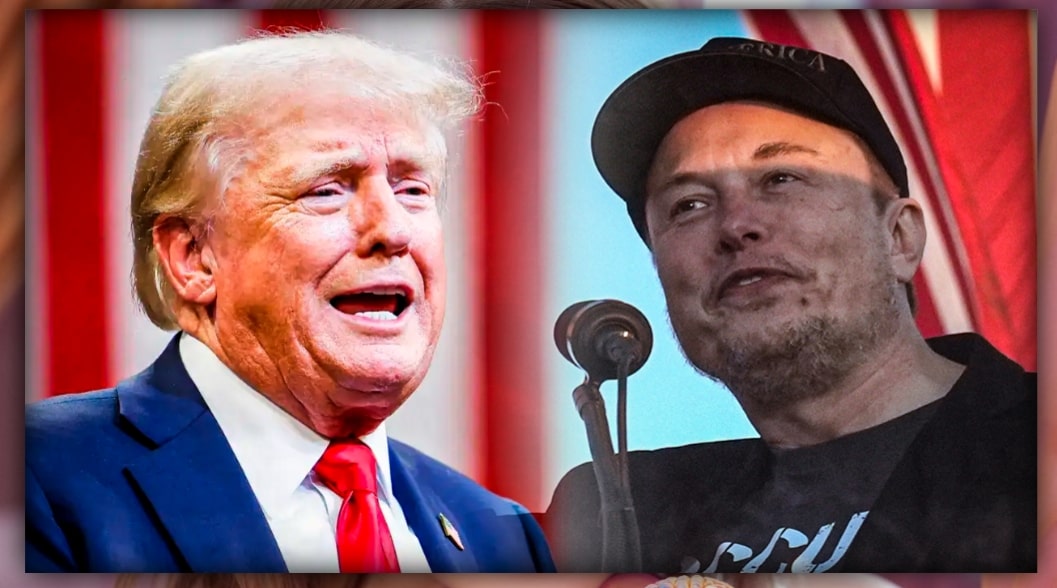
Trump Sweeping Executive Orders
Trump to Sign Sweeping Executive Orders on Immigration, Economy, Environment, and Gender Recognition
On January 20, 2025, President Donald Trump is poised to sign a series of executive orders that would significantly alter the landscape of U.S. policy, with major changes expected in areas ranging from immigration and border security to the environment and gender identity. These directives represent the administration’s commitment to reshaping critical aspects of governance, advancing a nationalistic agenda focused on sovereignty, economic growth, and traditional values.
While these executive orders are not without controversy, they align with many of the key promises Trump made during his 2020 campaign and his second run for the White House. The sweeping nature of these orders reflects Trump’s desire to leave a legacy of bold, transformative change, particularly in areas that have long been points of contention in American politics. From renaming iconic landmarks to enforcing stricter immigration policies, Trump’s actions will likely have far-reaching consequences, both in the United States and internationally.
National Emergencies on Border Security and Energy
One of the first actions President Trump will take involves declaring two national emergencies: one aimed at border security and another focused on the energy sector. These declarations will unlock the use of extraordinary executive powers, allowing the administration to bypass legislative hurdles and push through policies that it deems vital to national security and economic prosperity.
Border Security Emergency Declaration
The first national emergency declaration will focus on border security. Under this declaration, Trump intends to deploy the U.S. military to combat illegal immigration, drug trafficking, and transnational criminal organizations that operate along the U.S.-Mexico border. This emergency declaration builds on the border security issues that dominated Trump’s previous presidency, where he prioritized building a border wall and increasing enforcement of immigration laws.
This move is seen as part of Trump’s broader strategy to address what he views as an invasion of illegal migrants, drug cartels, and gang violence entering the country. By using military forces to bolster border security, the administration intends to enforce immigration laws more aggressively and execute mass deportations of undocumented migrants. These orders are expected to include not only heightened surveillance and physical security measures along the border but also the use of military assets to carry out operations targeting organized crime and human trafficking networks.
The national emergency could lead to significant changes in how the United States approaches its relationship with neighboring countries, particularly Mexico. While Trump’s initial focus on a physical border wall faced resistance from Congress, this declaration will enable him to sidestep legislative delays and continue the construction of the border wall. In addition, the emergency declaration could allow for more military cooperation between the U.S. and Mexico, especially in combating drug cartels and criminal organizations.
Energy Emergency Declaration
The second national emergency declaration centers on the U.S. energy sector. As part of this initiative, President Trump intends to revoke several key environmental regulations that he believes hinder domestic energy production. Notably, the administration aims to dismantle the Environmental Protection Agency’s (EPA) “electric vehicle mandate,” a rule that requires automakers to reduce greenhouse gas emissions from new light- and medium-duty vehicles starting in 2027.
Trump’s administration has long been critical of policies aimed at curbing greenhouse gas emissions, arguing that such regulations stifle economic growth and harm American businesses. The energy emergency will seek to prioritize the production of oil and gas in the United States, continuing Trump’s push to make the country energy independent and reduce reliance on foreign oil imports. By lifting restrictions on fossil fuel development, including opening up public lands to oil drilling and expanding access to federal lands for resource extraction, the Trump administration aims to boost U.S. energy production, create jobs, and increase the country’s competitiveness in global markets.
This focus on energy independence and fossil fuel production contrasts sharply with the policies of previous administrations, particularly those of former President Joe Biden, who sought to reduce U.S. reliance on fossil fuels and invest in renewable energy sources. Trump’s energy emergency declaration underscores his commitment to fossil fuel industries and his belief in the economic benefits of expanding the domestic energy sector.
Gender Recognition and Official Document Changes
One of the most contentious aspects of the executive orders President Trump is expected to sign involves a directive that would redefine how the federal government recognizes gender. Under this order, the U.S. government would only recognize two sexes: male and female. This change would apply to various federal documents, including passports, visas, and other identification issued by government agencies.
The directive is seen as a pushback against the broader societal acceptance of non-binary and gender-fluid identities, which have gained increased visibility and legal recognition in recent years. Trump’s administration views this policy as a way to “restore sanity” to the gender recognition process, arguing that it is crucial for the government to have a clear and consistent approach to defining gender. The order is likely to spark significant debate and opposition from LGBTQ+ advocacy groups, who argue that it undermines the rights and recognition of transgender and non-binary individuals.
Under the proposed policy, agencies such as the State Department and the Department of Homeland Security would be tasked with enforcing this definition of gender on federal documents. This move could have far-reaching implications for individuals who do not identify as male or female, as it would limit their ability to obtain government identification that accurately reflects their gender identity. Legal challenges are expected, as this policy could be viewed as discriminatory and in violation of civil rights protections for transgender and non-binary people.
Potential Renaming of the Gulf of Mexico and Mt. Denali
In another highly symbolic move, President Trump is expected to propose renaming two iconic landmarks: the Gulf of Mexico and Mt. Denali. The Gulf of Mexico would be renamed the “Gulf of America,” while Mt. Denali would be changed back to “McKinley,” a name that was officially adopted during the presidency of William McKinley in the late 19th century. This initiative has already sparked controversy, with critics arguing that such changes are unnecessary and politically motivated.
The renaming of the Gulf of Mexico is particularly contentious given the historical and geographical significance of the name. Mexico, which shares the Gulf with the United States, is unlikely to support this change. The Gulf of Mexico has been recognized by that name for centuries, and many Mexican officials have already expressed opposition to the proposal. Likewise, the renaming of Mt. Denali back to McKinley is likely to be met with resistance from Native Alaskan groups who view Denali as an important cultural and historical symbol.
These name changes are seen as part of a broader effort by Trump to challenge what he perceives as a trend toward erasing historical traditions and symbols. However, critics argue that these actions are politically divisive and detract from more pressing issues facing the country.
Reversal of Key Biden Administration Policies on Climate and Immigration
Another significant element of Trump’s executive orders is the reversal of several key policies implemented during the Biden administration, particularly in the areas of climate change and immigration. The Biden administration had worked to implement sweeping environmental regulations aimed at reducing greenhouse gas emissions and transitioning to renewable energy sources. Trump’s executive orders are expected to roll back many of these measures, signaling a return to fossil fuel reliance and deregulation.
In the realm of immigration, Trump’s executive orders will undo several Biden-era policies designed to protect undocumented migrants and expand pathways to citizenship. This includes suspending refugee resettlement programs, halting the issuance of certain visas, and targeting individuals who overstayed their visas. Additionally, Trump plans to challenge the constitutional guarantee of birthright citizenship for children born in the U.S. to non-citizen parents. This move would mark a dramatic shift in the interpretation of the 14th Amendment, which grants citizenship to anyone born on U.S. soil.
These reversals are part of Trump’s broader strategy to reassert control over immigration policy, focusing on stricter enforcement and curbing the flow of migrants into the country. By rolling back Biden’s policies, Trump aims to bolster his stance on national security and reinforce his “America First” agenda.
Military Action Against Drug Cartels
As part of his border security and national emergency declarations, President Trump also intends to target drug cartels operating within the U.S. and across its borders. The administration plans to designate drug cartels as “global terrorists,” a move that would enable the U.S. military to take more aggressive action against these organizations.
The use of military forces to combat drug cartels represents a significant escalation in the U.S. government’s approach to combating the illegal drug trade. While the U.S. has long used law enforcement agencies to combat drug trafficking, Trump’s approach would involve direct military involvement in operations aimed at dismantling cartel infrastructure and targeting key cartel leaders.
This policy is likely to raise legal and ethical concerns, as military operations on U.S. soil are typically prohibited without congressional approval. Furthermore, using the military in such a capacity could escalate tensions with neighboring countries, particularly Mexico, where many drug cartels operate. However, the Trump administration views this action as essential to safeguarding U.S. borders and national security.
Executive Orders on Immigration and Citizenship
Finally, Trump’s executive orders will address broader issues related to immigration and citizenship. These orders include suspending refugee resettlement programs, stopping the issuance of certain visas, and cracking down on illegal immigration through heightened border enforcement. One of the most controversial aspects of these measures is the potential challenge to birthright citizenship. Trump’s administration intends to end the constitutional right to citizenship for children born in the U.S. to parents who are in the country illegally.
This change would have profound implications for immigrant families, especially those who have lived in the U.S. for years but lack legal status. Many experts predict that such a move could face significant legal challenges, as the U.S. Supreme Court has consistently upheld the principle of birthright citizenship under the 14th Amendment.
Conclusion
President Trump’s upcoming series of executive orders marks a defining moment in U.S. politics, signaling a return to hardline policies on immigration, energy, and national security. These actions will have far-reaching consequences, reshaping the country’s approach to key issues and likely sparking intense debates across political and social divides. Whether these executive orders will succeed in reshaping American policy remains to be seen, but it is clear that Trump’s second term in office will be characterized by bold actions that challenge the status quo.








![JAWAN MOVIE 2023,रिलीज़ दिनांक,SRK के जवान के बारे में वह सब कुछ जो आपको जानना आवश्यक है,9. जवान कास्ट वेतन या पारिश्रमिक शाहरुख खान,8. शाहरुख खान का डबल रोल?,मुंबई:,1. निदेशक,2. जवान बजट,3. अग्रणी महिला,4. खलनायक,7. जवान प्लॉट,,[CENEMA HALL ]बॉक्स ऑफिस,](https://techmitras.com/wp-content/uploads/2023/07/image_search_1689007601111.jpg)





